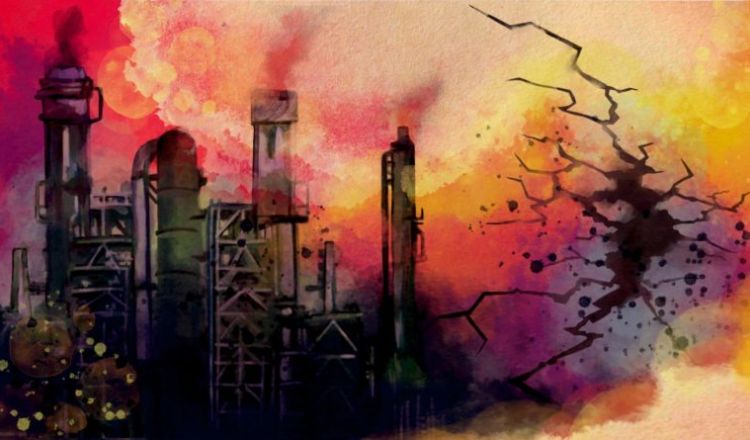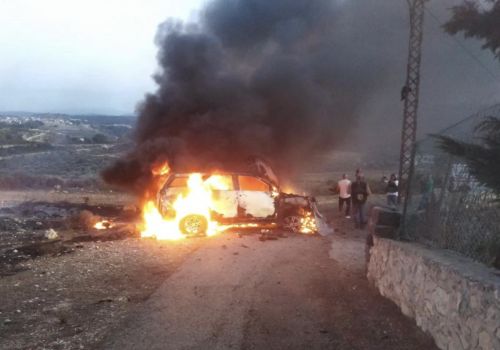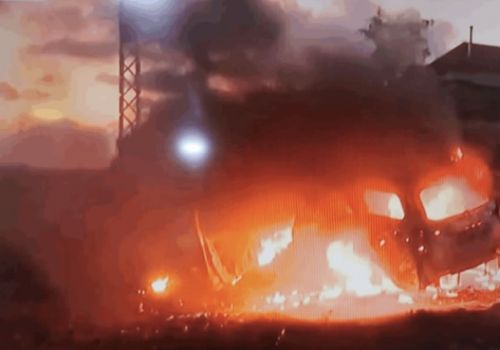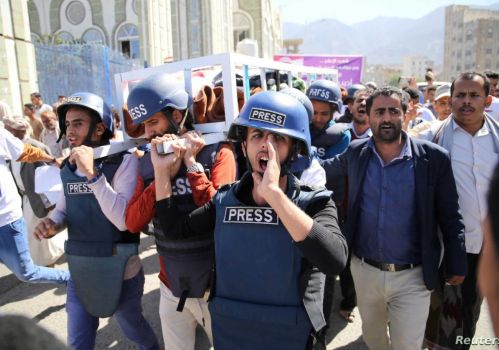GIJN’s Guide to Investigating Methane — A Key to Fighting Climate Change
2022-02-07 01:27

(Illustration: Marcelle Louw for GIJN)
GIJN’s Guide to Investigating Methane — A Key to Fighting Climate Change
By Toby McIntosh-GIJN
Reducing methane emissions is the single fastest way to fight climate change, according to climate scientists. Emissions of methane, the second most abundant greenhouse gas (behind carbon dioxide), are rising rapidly and reaching new highs.
This summary of GIJN’s full guide to covering methane is designed to help investigative reporters identify specific sources of methane emissions and hold companies and countries accountable. We describe:
- The background on why methane emissions matter and the state of the current data sources.
- Why methane measurement systems are flawed and how to investigate them.
- How to find methane emitters on the ground and from the sky.
- How to question disclosures and commitments by companies.
- How to hold countries accountable for their emissions and pledges.
Here’s a condensed version of our tips and tools.
Interrogating the Data

Illustration: Marcelle Louw for GIJN
There is wide agreement among scientists that methane emissions are routinely undercounted or overlooked. This makes measurement itself an important subject for reporting.
There are several primary sources of information on methane emissions.
Overall methane emissions are tracked and published by the International Energy Agency (IEA), a Paris-based intergovernmental organization, most recently in Methane Tracker 2021. Country-by-country data is provided in the IEA’s Methane Tracker Database, which provides information on emissions and estimates of “abatement potential.”
Story ideas:
- What are your country’s emissions?
- Where do they come from?
- Are the measurements accurate?
National methane emissions data gets submitted to UN Climate Change by national governments, pursuant to the United Nations Framework Convention for Climate Change (UNFCCC).
The developed countries submit annual reports called National Inventory Reports (NIRs), about their greenhouse gas emissions. (See National Inventory Submissions 2021 on the UNFCCC site). Developing countries submit their emissions data as part of their Biennial Update Reports (BURs).
One critical weakness in methane emissions measurement occurs because each country is free to use different methodologies to make its estimates. This results in questionable data.
Another fundamental problem with methane emissions data collected by governments is that it is based on estimates and equations, not actual measurements. Some countries are legislating on this problem.
Investigating Methane Leaks

Illustration: Marcelle Louw for GIJN
The sources of methane emissions — particularly from natural gas and oil production — can be exposed.
Detection requires infrared cameras and satellites, meaning that collaboration with experts is necessary.
GIJN has identified two environmental groups with infrared cameras that are willing to work with reporters to conduct an on-the-ground investigation of possible methane emitters.
Story ideas:
- Work with groups or scientists who have infrared cameras that can detect leaks.
- Look to obtain satellite imagery from the growing number of sources.
The Clean Air Task Force (CATF) has documented emissions from oil and gas facilities all over Europe and is looking to expand to other regions. Here’s a YouTube description of the project and an explainer on its use of infrared (OGI) technology.
Journalists interested in working with a CATF camera operator should contact Rowan Emslie.
Another NGO with infrared camera capability and a willingness to collaborate with journalists is Earthworks. Reporters interested should reach out to Justin Wasser or Josh Eisenfeld.
There are commercial sources for emissions information based on satellite images. Several companies that provide limited information for free and may offer discounts
Geofinancial Analytics is a US company with products including a new one, MethaneScan Data Lake, that provides methane emissions ratings on over 100,000 energy producers, with a current focus on North America. The datasets and maps are available at a 50% discount ($1,000 per month) to nonprofit organizations and to journalists without deep pockets.
Kayrros, a data analytics company, occasionally issues press releases or alerts reporters to its findings. Bloomberg contracted to mine the Kayross database, an option open to others, a company executive said.
GHGSat also sometimes issues information on methane emissions found by its satellites.
Periodic disclosures of emissions findings have also come from the European Space Agency and SRON, the Netherlands Institute for Space Research.
Several new sources, with mandates to share information, are poised to emerge, but not until 2023.
- Carbon Mapper is a US nonprofit consortium that promises to use technology developed by the US space agency NASA and data from its own methane-sensing satellites, which are set to be launched in 2023.
- MethaneSAT is being developed by a subsidiary of the Environmental Defense Fund (EDF) and is scheduled to launch in the fall of 2022.
- The International Methane Emissions Observatory (IMEO) was established by the European Union and UN Environment Programme to monitor emissions using company data, satellite technology, and scientific studies.
- Project Astra is a US project that plans to deploy a network of on-the-ground sensors that will “monitor [methane] emissions across an oil and gas production region.”
- The Global Gas Flaring Explorer is “a new and improved web-based application that will map global gas flaring data and will be publicly available in 2022,” according to a 2021 report by the World Bank’s Global Gas Flaring Reduction Partnership (GGFR).
Images aren’t the only potential sources for information about emissions. Here are some other tips:
- look for public documents held by regulators,
- make friends with local scientists and NGOs working in this area, there is a lot of research going on, and
- talk with workers at oil and gas facilities and other potential emission sites.
Seeking comment from the sources of observed emissions is standard journalistic operating procedure, but the answers can be incomprehensible and intimidating.
Those responsible may say the emissions are legal or normal operating procedures. These statements may be correct and hard to verify. Turning to government regulators, both local and national, as well as knowledgeable NGOs is the best bet. Other potential sources are nearby residents, industry experts, plus employees, or former employees, of the company being investigated.
Investigating Corporate Emissions — and Broken Promises

Illustration: Marelle Louw for GIJN
Many companies are far from transparent about their methane emissions, but they are under increasing pressure to disclose more and emit less. The rising expectations should prompt journalists, including business journalists, to ask more questions.
The oil and gas industry, which is responsible for roughly one-third of methane emissions, is the most important sector on which to focus attention. Many, not all, companies report their emissions, and the way they report them can be tricky.
Story ideas:
- Focus attention on key industries.
- Ask about known or estimated levels of emissions.
- Ask about specific emissions goals and mitigation efforts.
The complexity of measurement forms a shield against inquiry, but not an impenetrable one. To penetrate it, it’s best to consult academic and NGO experts on climate change, and possibly corporate watchdogs and investors. And to ask companies for explanations.
Corporate disclosures about methane, where they exist, typically occur on company websites in “sustainability” reports. Some corporate disclosures, in a unified format, are available on the site of CDP, a not-for-profit organization.
One source of emission is flaring, the burning off of flammable waste gases.
The World Bank’s Zero Routine Flaring initiative (ZRF) enlists governments and oil companies to publicly report their flaring. The flaring data self-reported by countries and corporations is published on the ZRF website.
A variety of efforts are underway to facilitate better corporate reporting about emissions reporting in the oil and gas sector.
The Oil and Gas Methane Partnership (OGMP) is an initiative with 74 large corporations as members, representing 30% of the world’s oil and gas production. Various UN agencies and the EDF are involved. The first report on the data was released in November 2021.
The Oil and Gas Climate Initiative (OGCI) is an industry initiative that created a Reporting Framework. A consortium of some oil and gas companies created Methane Guiding Principles, which lays out best practices.
When it comes to reporting on corporate methane emissions, these questions are a good place to start:
- What are your methane emission levels?
- Are they rising or falling, and by how much?
- How are your figures calculated?
Verification regimes also exist, designed to certify that corporate operations are meeting standards. A legitimate line of questioning for companies is whether they will join such verification efforts. In addition, asking companies about their positions on proposed government policies relative to methane regulation may be revealing.
There has been a marked uptick in the number of corporations making promises to reduce methane emissions. The details of their commitments, however, may not be so clear, and the adequacy of their pledges is a matter of much debate.
Look for information on the specifics and mechanisms of commitments. Some suggestions include:
- Because stated reduction goals are often for extended periods, like 10 or 20 years, ask about short-term and intermediate goals.
- Inquire about how, exactly, the plan will be implemented, which is not always spelled out.
- Look into the methods for achieving reductions.
Picking the largest methane emitters as initial targets makes sense. An especially promising focus would be the large nationally owned petroleum companies.
Methane emissions don’t just occur at the extraction point. Attention is increasingly being focused on emissions all along the supply chain.
Methane emissions derive from agriculture, aviation, maritime shipping, and other sectors.

Illustration: Marcelle Louw for GIJN
Agricultural production, in particular, is a significant source of methane, mainly from rice growing (released by bacteria in flooded paddies) and cattle farming. Questions are being raised not only at the farm level, but also of the companies that use the raw materials, about what mitigation can be accomplished.
Following the latest research on solutions is a necessary supplement to reporting on methane. New ideas are being tested at a rapid pace. Following the science will potentially yield timely questions to pose.
Holding Countries Accountable for Methane Emissions
In advance of the UN climate change summit (COP26) in Glasgow, Scotland in November 2021, many countries made promises to reduce their methane emissions.
Story ideas:
- How and why were national reduction levels chosen?
- How will the goals be accomplished and verified?
Information on similar emissions commitments can be found in the UN’s Nationally Determined Contribution (NDCs) reports submitted by individual national governments. The NDCs are published on the UN’s NDC Registry. The UNFCCC also prepares NDC synthesis reports. (See the October 2021 version here.)
Some countries disclose national emissions data in these reports.
The 111 signatories to the Global Methane Pledge have agreed to a global goal of a 30% reduction from 2020 levels by 2030. However, signing the pledge does not bind individual countries to specific goals.
The best sources for critiques of the plans will likely be local/regional environmental groups, scientists, the business community, and political actors.
Because the measurement of the emissions is a critical starting point, reporters could scrutinize the methodology being used to estimate the emissions.
Sub-national jurisdictions, such as provinces and cities, also are making net-zero commitments.
“There is no question that methane gas emissions are a huge problem, accelerating climate change at a critical moment for our planet,” said Rafael Lorente, a former reporter who is currently director of the University of Maryland’s graduate school of journalism. “The journalists’ problem is telling that story in a compelling way.”









